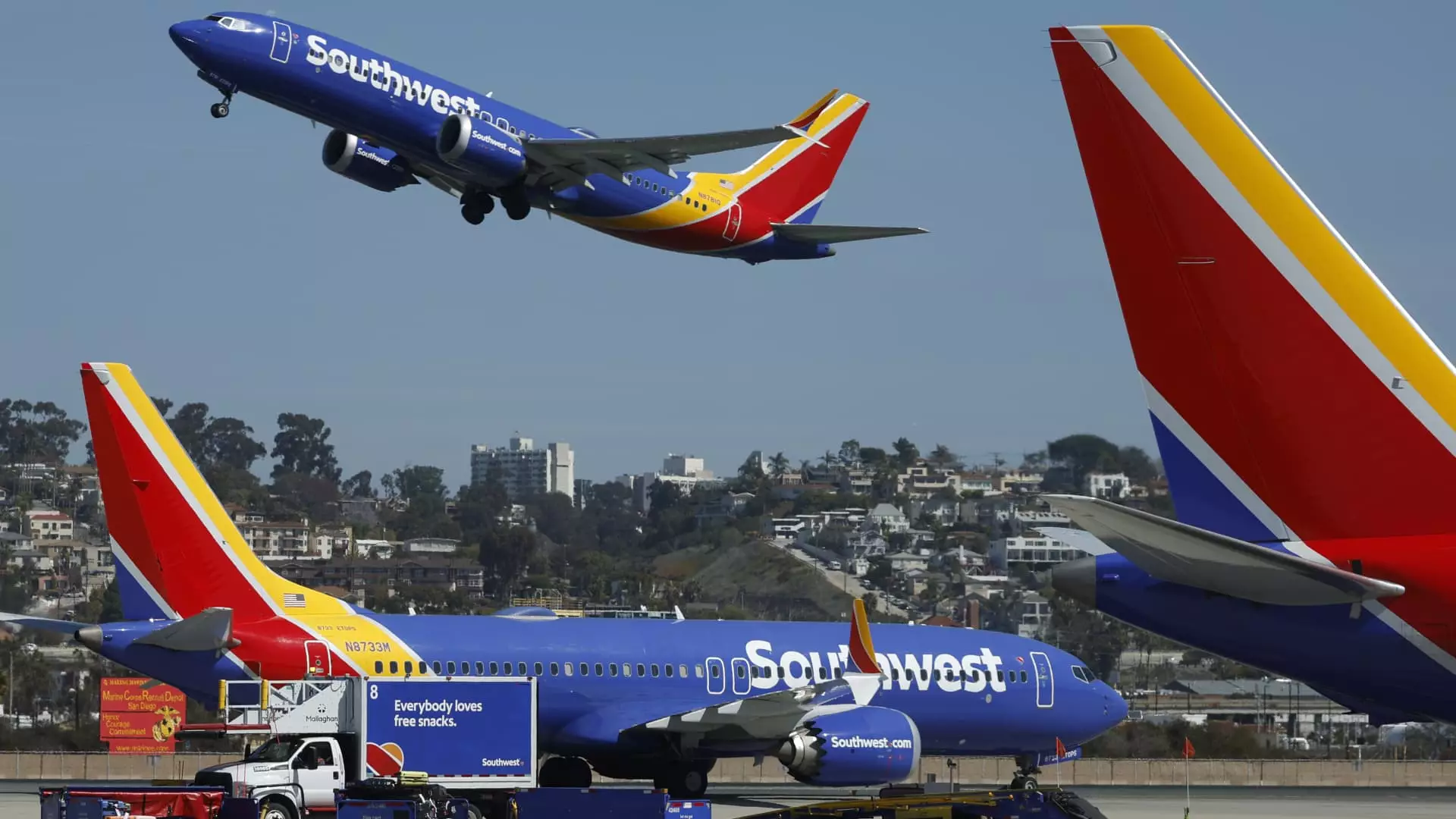In the fiercely competitive airline industry, innovation is not merely beneficial; it’s imperative. Southwest Airlines, a beloved brand that has thrived for over five decades on its no-frills slate, is straddling a critical juncture. CEO Bob Jordan recently revealed aspirations for transformational changes that could extend their offerings to airport lounges, premium seating, and even long-haul international routes. The stakes are high, prompting a potentially dramatic shift in Southwest’s core ethos that has historically appealed to budget-conscious travelers.
Southwest’s legacy of uniquely friendly service and straightforward pricing is now at risk, caught in the crosshairs of an evolving market landscape and lofty expectations set forth by competitors. The modern traveler is faced with a multitude of choices, and if Southwest remains stagnant, it risks losing its customer base to airlines that are already stepping up their game. The time for transformation is now, and anything less could leave Southwest in turbulence.
Long-Haul Aspirations: A Risky Gamble?
Jordan’s mention of possible long-haul flights raises a plethora of questions. Does the airline truly have the infrastructure, both in terms of aircraft and service quality, to cater to international clientele? The Boeing 737 has served Southwest well for years, but it has its limits. Introducing long-haul aircraft would require extensive training, maintenance, and marketing strategies, all while juggling the legacy of its existing fleet.
Moreover, taking the leap into international markets comes with inherent risks. The target audience in cities such as Nashville—their self-proclaimed stronghold—may desire a more luxurious experience, but the true test lies in whether they are willing to pay a premium for these aspirations. Will the core customer base that helped build Southwest’s identity embrace this migration towards a model reminiscent of legacy airlines? Or will this shift alienate those who value the low-cost, no-frills service? There’s a fine line between expanding horizons and straying too far from the brand’s roots.
Market Competition: A Wake-Up Call
The pressure is mounting on Southwest as competitors like Delta, United, and American Airlines pour investments into upscale airport lounges and premium seats. American Airlines, for instance, has announced significant expansions in its lounge spaces, effectively raising the stakes in what customers expect from air travel. While Jordan asserts that Southwest is attempting to retain its clientele within their own family, he must recognize that existing loyalty could quickly pivot if travelers feel underserved.
Exactly how will Southwest carve out its niche amidst this aggressive landscape? The reality is that complacency could be its downfall, particularly when juxtaposed against aggressive marketing from rival companies. Customers today aren’t merely looking for a flight; they crave a complete travel experience, including enhanced comfort and exclusivity—elements Southwest has yet to fully embrace.
The Pressure is On: Economic Uncertainty
The current state of U.S. airfare, characterized by a deflationary trend, only complicates matters for Southwest. The carrier has already faced challenges this year due to economic uncertainties, impacting their 2025 forecasts. Potential customers are weighing their options, especially as fares drop and promotional opportunities abound. Jordan has noted that the summer travel season, typically rife with demand, is suddenly seeing discounts that may erode profitability.
As economic pressures continue to test the airline industry, it becomes crucial for Southwest not only to evaluate new premium offerings but to execute them in ways that align with current consumer expectations. The burgeoning audience for luxurious services is not a passing trend; it’s an evolution, and failing to adapt could see Southwest relegated to the backseat.
Home Turf or Hospitality Hub?
The potential for Southwest to create a more hospitable atmosphere at its focal points, like Nashville International Airport, represents a strategic opportunity. If customers in areas with strong Southwest loyalty are indeed seeking luxurious experiences, why not cater to that demand? Amplifying offerings of lounges or premium seating in key markets might be just the lifeline the airline needs to retain its competitive edge.
However, this rebranding must be performed judiciously, keeping Southwest’s foundational principles in mind. Allegedly happy customers should feel they’re still respected, not simply regarded as potential cash cows.
Ultimately, as Southwest Airlines contemplates these transformative options, it is walking a tightrope, grappling with the fear of alienating core patrons while simultaneously courting new, lucrative demographics. The way forward will be as critical as it is uncertain; a delicate balance of tradition and innovation awaits.

